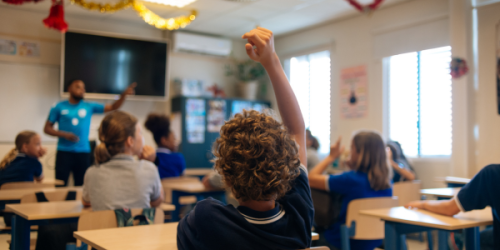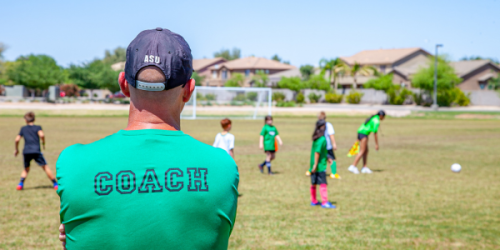When I began teaching, my mentors and professors encouraged me to film myself in action. I remember on several occasions handing my phone to a student at the beginning of class, requesting her to record the lesson and quietly praying that it would go smoothly. Having to watch myself teach, especially as a novice educator, made me feel painfully awkward, but reviewing the videos with my coaches was one of the most effective ways I identified patterns of strengths and errors in my practice. Just as football and basketball teams spend hours reviewing game tape, teachers have much to gain from self-observation. However, little has been done to standardize this process of observing and evaluating teachers.
A recent study by Thomas J. Kane, David Blazar, Hunter Gehlbach, Miriam Greenberg, David Quinn, and Daniel Thal explores if and how video-based observations can improve the teacher evaluation process. Treatment teachers filmed themselves and submitted self-selected videos to their supervisors whereas the control group teachers were traditionally observed by a supervisor three times over the course of the academic year.
It’s worth noting that even though treatment teachers did select their better videos to submit for formal evaluation, these self-selected samples were only slightly superior than the ones they filmed but did not share. The 2013 Measures of Effective Teaching study turned up similar results in comparing teachers’ scores on self-selected videos with those of their non-selected videos. This demonstrates that strong teachers generally understand the rubric used to assess their performance, while weaker teachers may not inherently understand what excellent lessons look like.
Most notably, treatment teachers and principals reported more productive and less adversarial post-observation conferences, where teachers were more likely to agree with their rating and describe the overall evaluation process as “fair.” Interestingly, teacher retention among those who were filming themselves was significantly higher: treatment teachers were 10 percent more likely to stick with their teaching assignment and 13 percent more likely to remain in their schools the year following the intervention. Based on these data, the researchers presume that controversial teachers-principal relationships are a key factor driving attrition, and video-based evaluations seem to eliminate many biases in the observers’ notes and teachers’ memory of a lesson.
Some other positive effects included principals having more flexibility in their schedules; two thirds of these administrators chose to complete their observational duties during non-instructional hours, freeing up their time during the school day for other tasks. Additionally, teachers participating in the study were more self-critical and likely to identify specific changes to make in their practice, reinforcing the importance of using videos as “mirrors” for self-reflection.
Normally we would end a write up on a promising new practice like this noting whether it had an impact on “what matters most: student learning.” In fact, this study found no effects on how students performed on their end-of-year tests, nor on student perceptions of their teachers. But in this case, it’s a low-cost, convenient, and clever way to make principals’ lives easier and teachers less defensive – and improve educator retention. What’s not to love?
More like this

Districts are facing hard choices: How can teacher evaluation help?

Rural teacher evaluation system shows promising results for students struggling in math

Put me in, coach! How practice plus coaching helps aspiring teachers win


